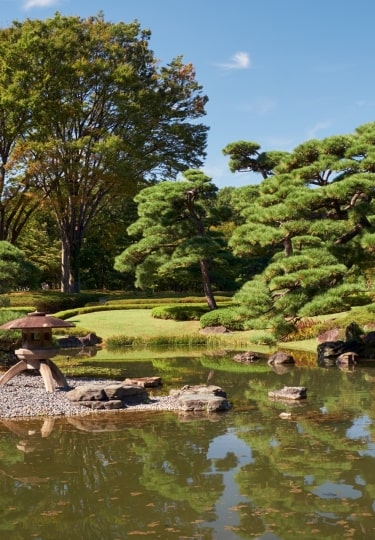Reducing things to their simplest and most beautiful is the essence of Japanese art. Familiar to us all from the country’s cuisine, poetry, and painting, this philosophy can also be seen in its gardens in Tokyo.
There are five main styles of Japanese garden, with the naturalistic Kaiyu style and the sandy Zen garden being the most familiar. No matter the style, they reflect an idealized view of nature, designed more for inward contemplation than outward show.
Even in modern Tokyo, many such gardens remain, offering a quiet place to escape the city’s buzz. Here are ten of the best gardens in Tokyo to enjoy.
Kyu Shiba-Rikyu Gardens
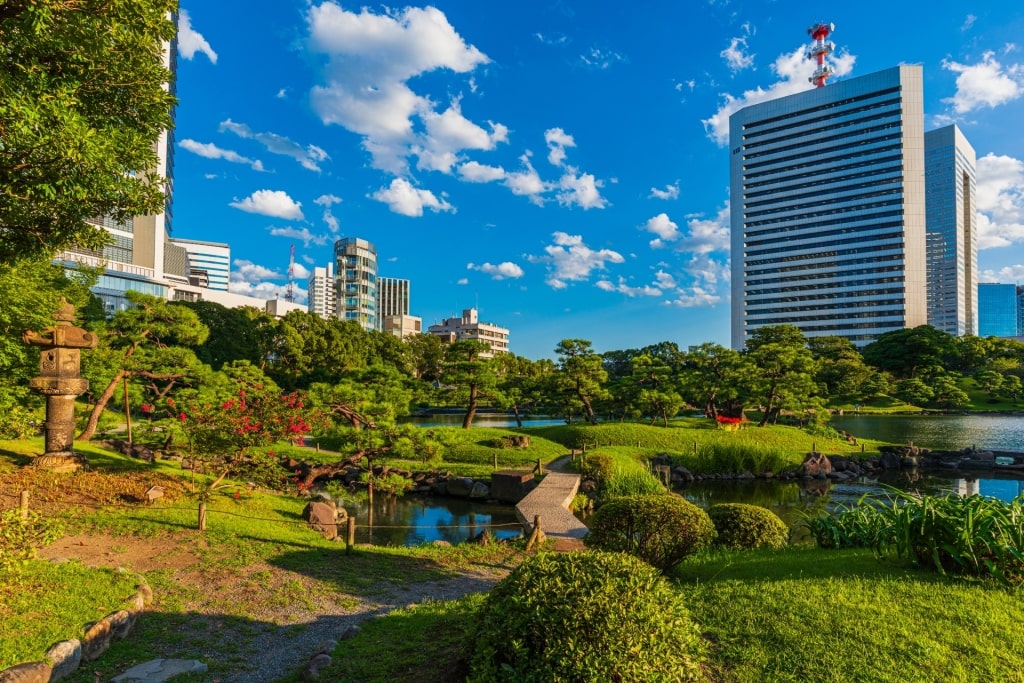
Kyu Shiba-Rikyu Gardens
This 300-year-old garden is widely considered the most beautiful green space in Tokyo for good reason. Exquisitely detailed, it is also lovingly maintained and has a real sense of calm.
Built on land reclaimed from Tokyo Bay, it once belonged to the emperor. Nowadays, it’s popular for a quick lunch break with workers from the office blocks that tower overhead.
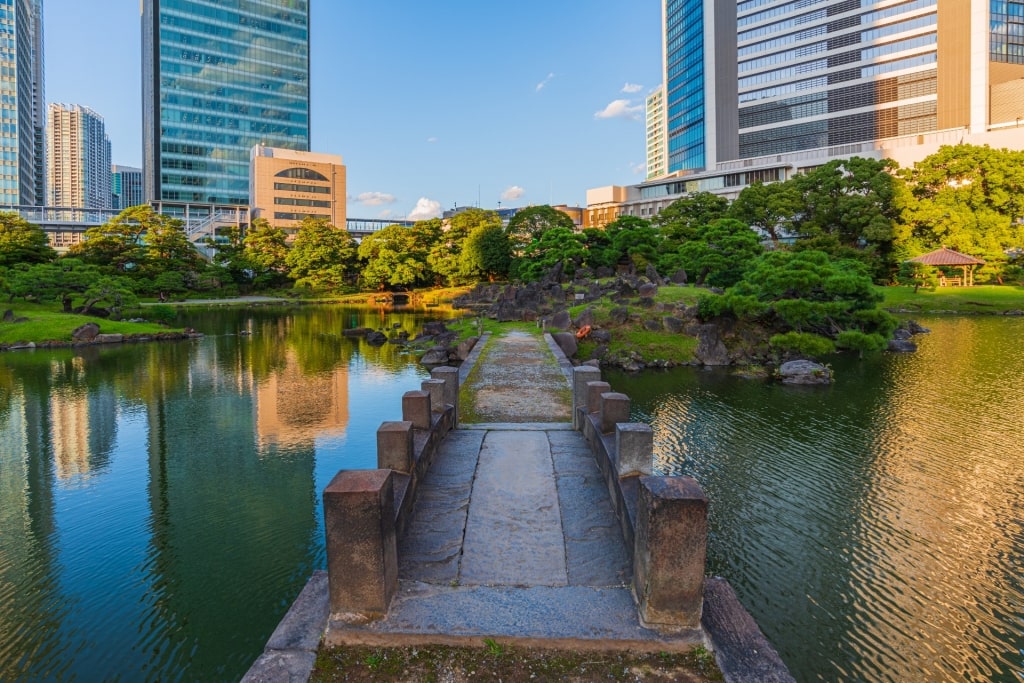
Kyu Shiba-Rikyu Gardens
A typical Kaiyu or “strolling” garden, it has a wheelchair-friendly path designed to be followed clockwise around the central lake. Inspired by the beautiful West Lake of China’s Hangzhou, this Sensui, or lake has two main islands landscaped with rocks, trees, and hillocks.
The rocks on Nakajima, the largest island, are stylized to represent a mythological Chinese mountain. Another striking rock feature in the garden is a Karetaki, or “waterless waterfall”.
“Nakajima” denotes an island reached by a bridge, often with a teahouse or pavilion. Conversely, one without a bridge, “Horaijima”, represents a mythical place beyond reach.
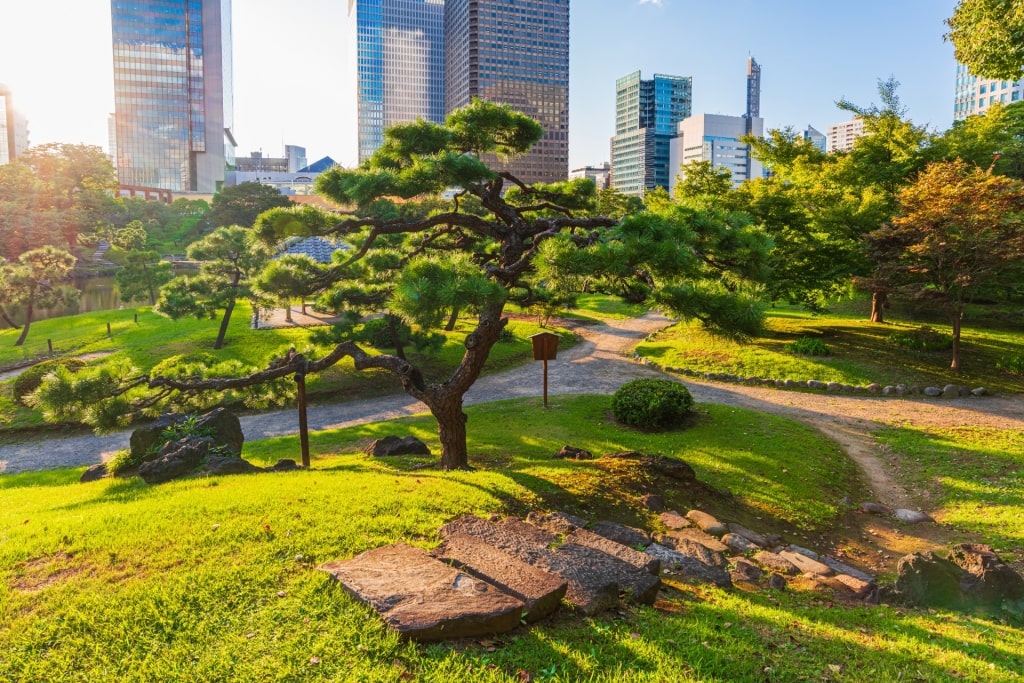
Kyu Shiba-Rikyu Gardens
Gnarled Japanese black pine and carefully formed shrubs give a year-round green background throughout Kyu Shiba-Rikyu. Seasonal colors come from cherry blossom, wisteria, iris, red spider lily, and apricot trees.
Read: Beautiful Places in Japan
Hamarikyu Gardens
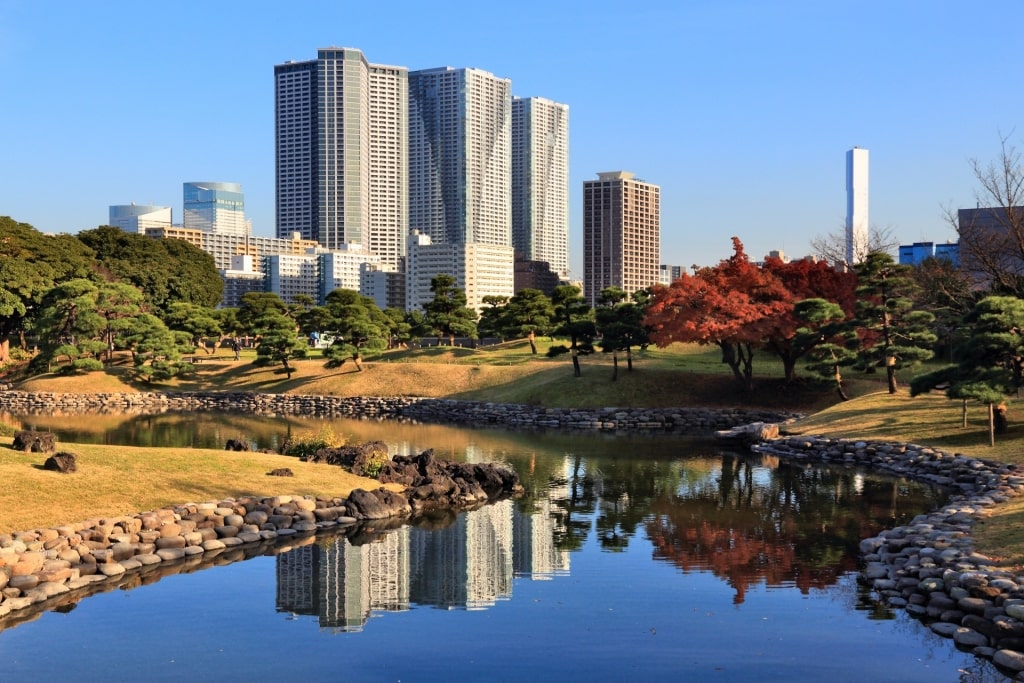
Hamarikyu Gardens
Hamarikyu is another classic “strolling” garden, designed so you discover different views as you walk around. Unlike the flamboyant European gardens with their lavish flowerbeds, this Kaiyu style is not a riot of color.
These gardens are designed to be as green as nature itself normally is, apart from the seasonal colors of plum trees or peony flowers. Unnatural straight lines are also avoided, and paths meander between trees that stand alone, not in regular rows.
Being right next to Tokyo Bay, Hamarikyu has three seawater ponds that change levels with the tide, and carry saltwater fish. Part of the original land was once used for duck hunting by 19th-century shogun Tokugawa.
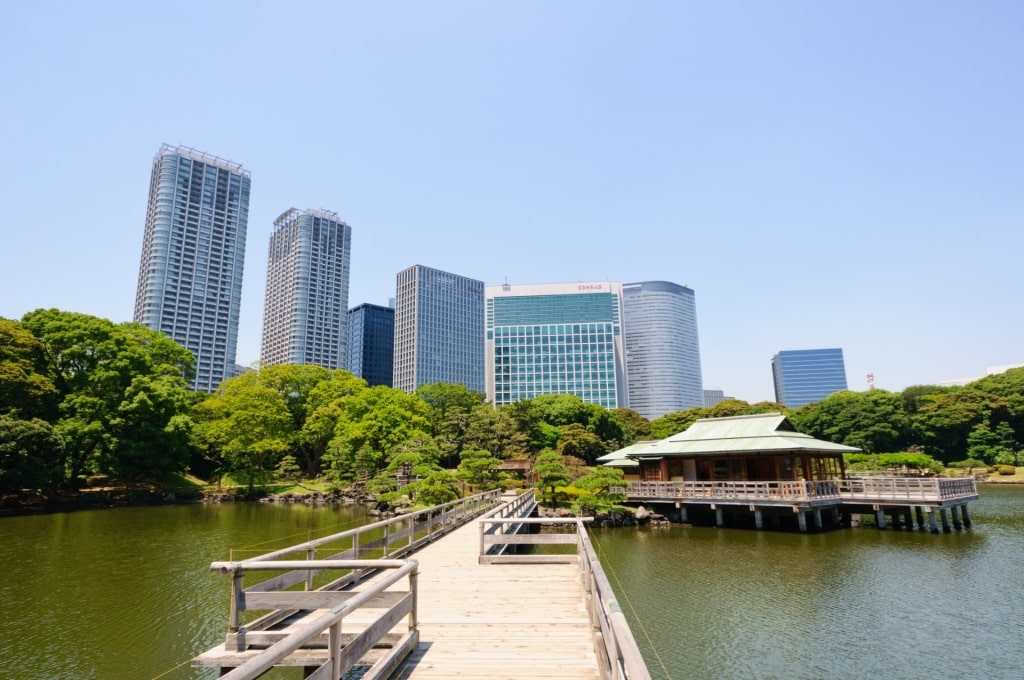
O-tsutai-bashi bridge in Hamarikyu Gardens
The largest pond contains an island with scenic bridges, including the cypress-wood O-tsutai-bashi. The traditional teahouse on this Nakajima has a terrace over the water, which is the perfect place to contemplate with a green tea and traditional sweets.
Read: What to Eat in Japan
Kiyosumi Gardens
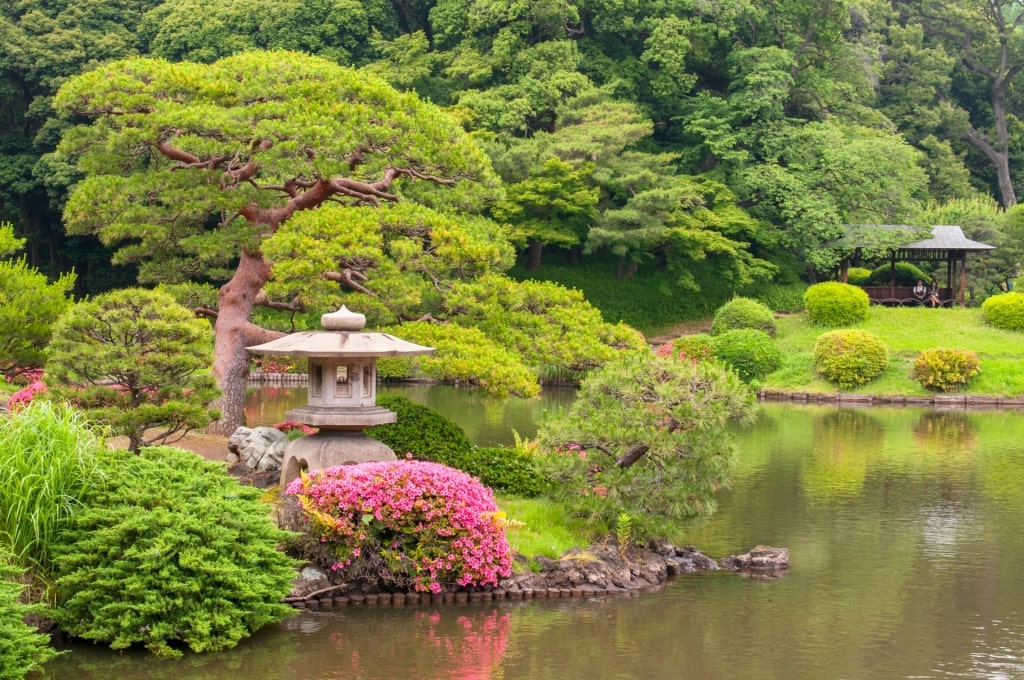
Kiyosumi Gardens
Dating back to the early 1700s, this garden in central Tokyo went through various hands until it became a city park in 1932. One previous owner was Iwasaki Yataro, founder of Mitsubishi, who imported stones from all over Japan with his steamships.
These stones still form the garden’s best and most famous features. They range from Iso-watari, a set of stepping stones on the lake edge, to Karetaki, a dry waterfall.
The garden is also a Kaiyu-style, Meiji period layout of central pond with trees in a naturalistic landscape. A path leads around the lake, revealing views as you go.
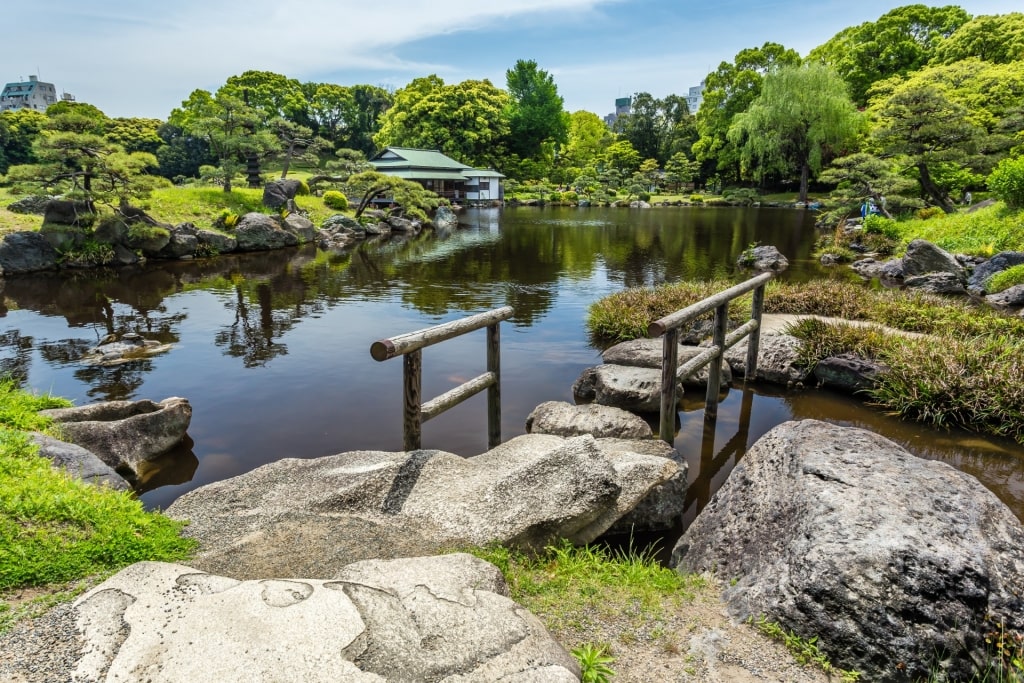
Teahouse in Kiyosumi Gardens
The man-made hill north of the lake is called Fuji-san. Once treeless, it is planted with trimmed azaleas that represent clouds on the sacred mountain.
The teahouse-style pavilion on the lake’s edge was built to entertain Britain’s Lord Kitchener in 1909. It’s recognized as a historic building and adds its reflections to the calm lake water.
These reflections are one typical keystone of Japanese garden design. Their shimmer guides you to consider the impermanence of existence, and the importance of living in the moment.
Imperial Palace East Garden
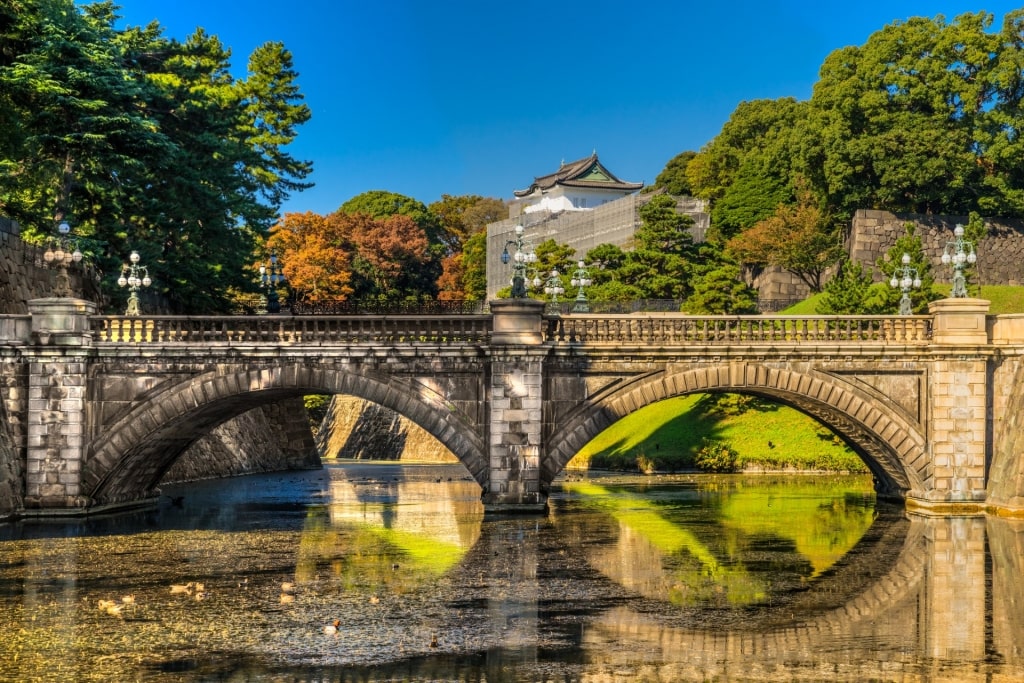
Imperial Palace
While the Imperial Palace—one of the most famous Japanese landmarks—is closed to the public, except on certain holidays, this East Garden is open all year. Entry is free but a token system prevents overcrowding.
Those entry restrictions, and its large size, means you have an unusual amount of park-like space to yourself for Tokyo. That sense of space is emphasized by large lawns and a limited number of trees.
The lawn marks where a castle keep once stood. Some base of a former tower does remain, from which you can enjoy a contrasting view of modern Tokyo rising beyond ancient trees.
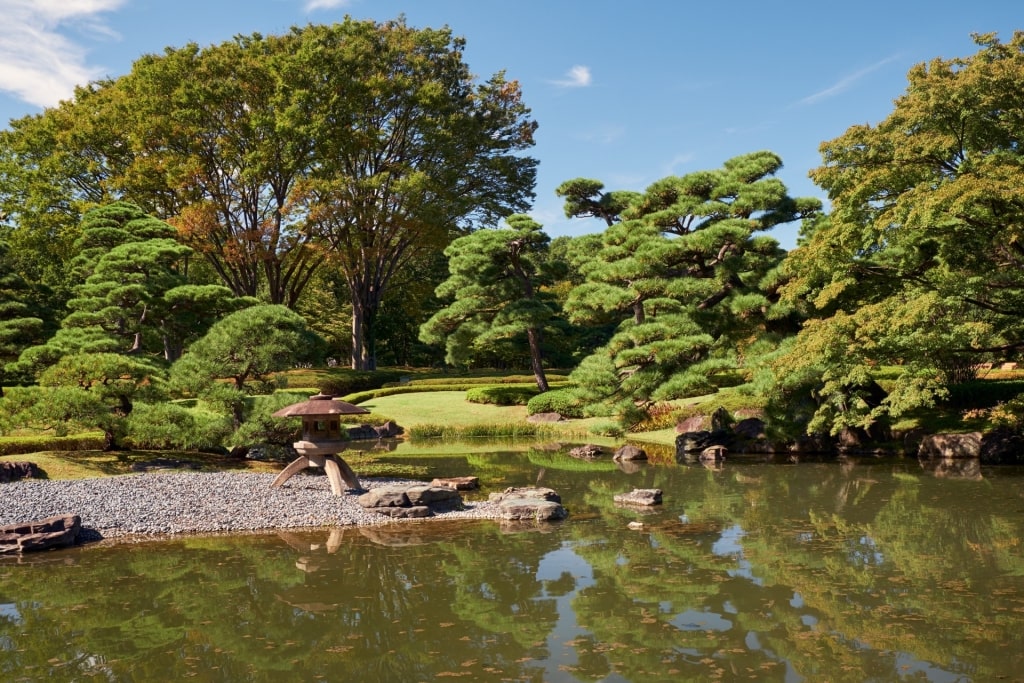
Ninomaru Garden
Ninomaru Garden is a more traditional Japanese garden in the grounds. It’s built within the former inner defenses (Ninomaru means “Second Wall”) and has a grove of 260 trees collected from all over Japan.
The space and lack of shade elsewhere can become a problem on hot days, so bear that in mind if visiting in summer.
Read: Three Days in Tokyo: The Ultimate Itinerary
Koishikawa Botanical Garden
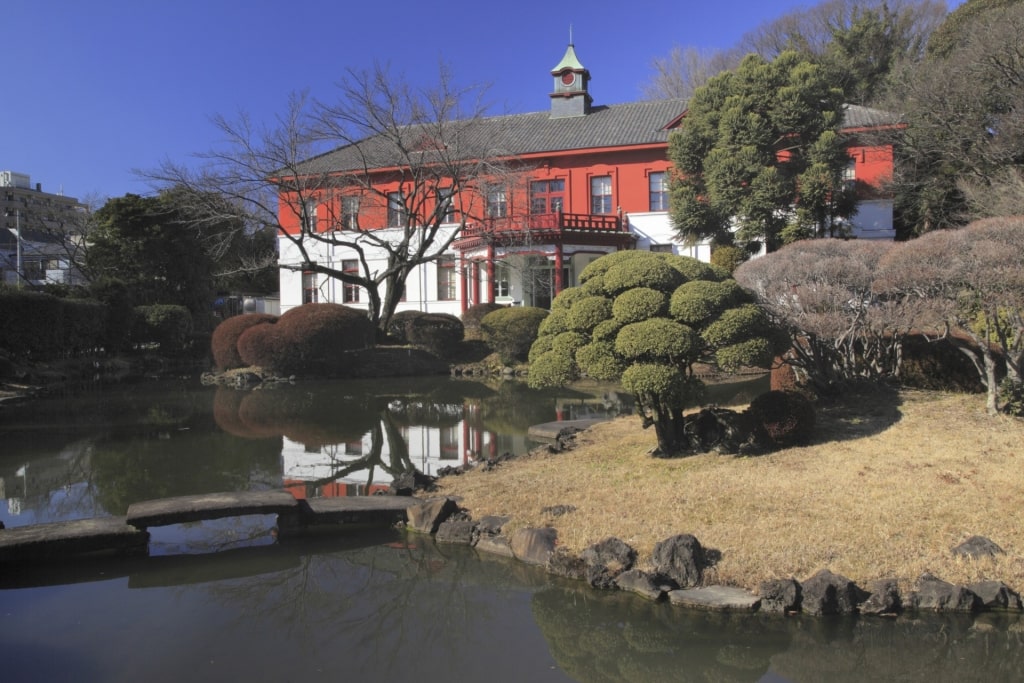
Koishikawa Botanical Garden
Among the world’s oldest botanical gardens, these grounds were first laid out in 1684. Originally for medicinal herbs, with a hospital attached in 1722, it’s now a botanical research center for the University of Tokyo. Koishikawa is without doubt one of the best gardens in Tokyo to visit.
Plants from other nearby Asian countries, such as Korea and China, add to the thousands of species growing here. Many of the 300-year-old trees are indigenous, as are many plants, the last remnants of the natural landscape before Tokyo was founded.
One apple tree was grown with a graft from the tree that supposedly inspired Issac Newton’s work on gravity. Beside it is a grapevine from the monastery in the Czech Republic where Gregor Mendel studied genes.
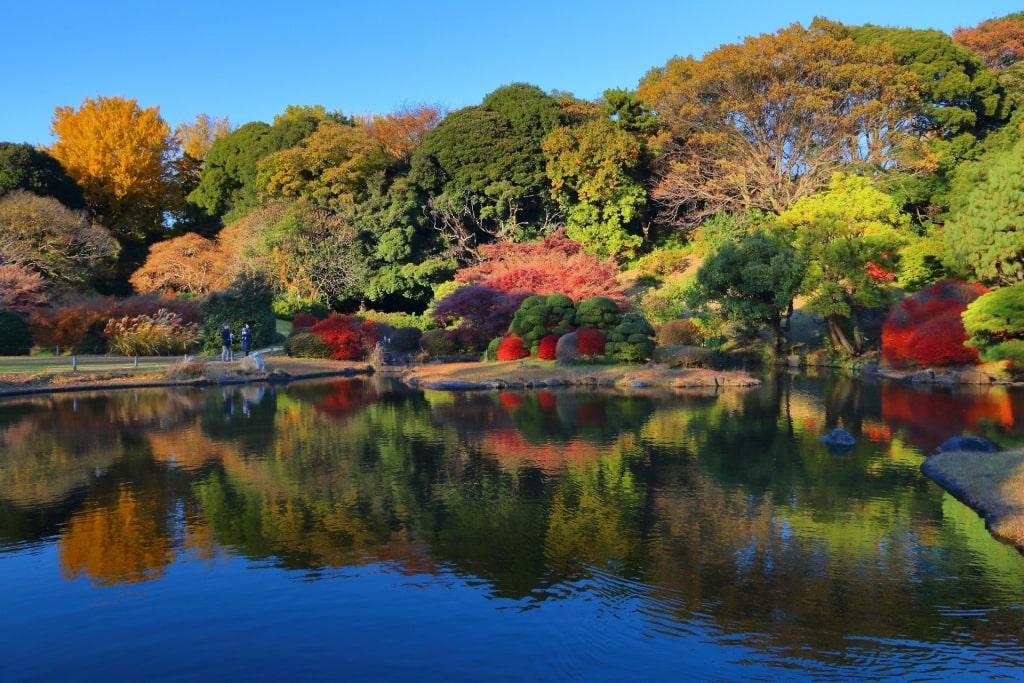
Koishikawa Botanical Garden
For Japanese people, it’s more significant that this is the place where scholar Aoki Konyo first grew sweet potatoes in the early 1700s. Having arrived from South America via Spain and China, the crop was a life-saving staple in several later Japanese famines and is still a very popular food.
The cherry blossoms in spring, and gingko trees in fall, are popular seasonal sights. There are some large green spaces around the pond, an unusual treat in congested Tokyo.
Read: What Is Japan Known For?
Rikugien Gardens
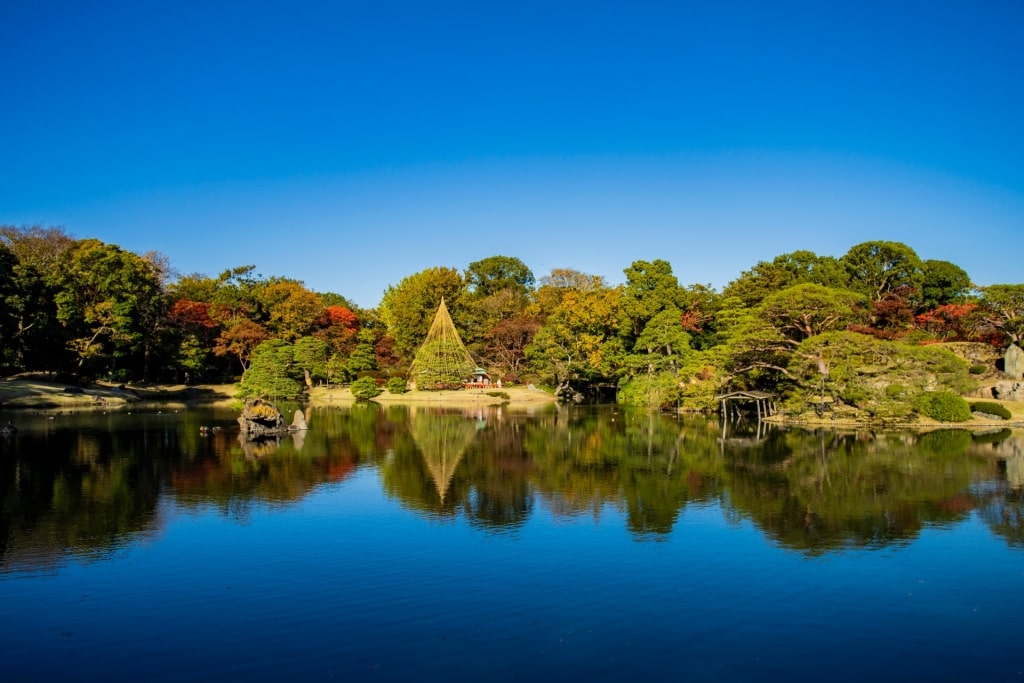
Rikugien Gardens
It can be hard to believe this beautiful garden is in Tokyo, as the city is well screened by its walls and mature trees. It also helps that it’s found in such a quiet neighborhood in Tokyo.
Dating to 1702, the garden is laid out in settings inspired by Japanese poetry. Rikugien means “Six Poems Garden”, referring to the linear structure of the Waka style.
When it was first designed, the garden had 88 views that recalled famous Chinese and Japanese landscapes. Today, 32 viewpoints remain, all marked by stones.
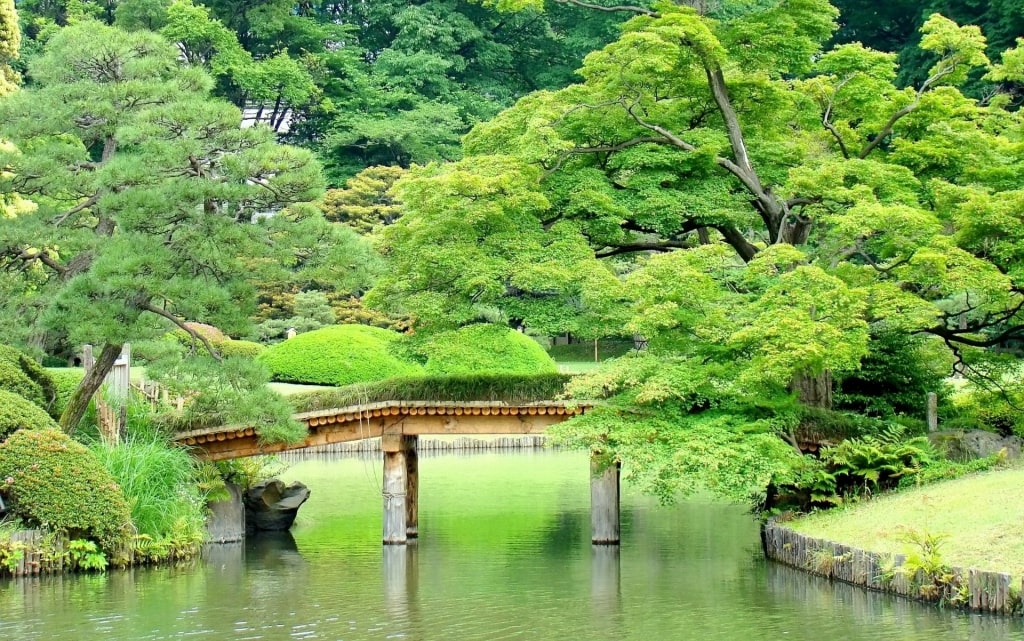
Rikugien Gardens
The central pond has a small hill—Fujimi-yama, or “Fuji view peak”—which is designed for an overall vista. The many lovely and varied bridges, as well as the Fukiage Chaya tea house, are other places to linger.
The paths in the garden wander around but always come back to the lake, which has koi and turtles. Whether it’s cherry blossom season or June in Tokyo, this garden is among the city’s most beautiful.
Mukōjima Hyakkaen

Mukōjima Hyakkaen
This is the only surviving Edo-era flower garden, and has a strong literary theme. Hyakkaen means “Garden where a hundred flowers bloom in four seasons of the year”.
That’s a good description of the garden which has flower species from all over Japan and China, and hundreds of ancient plum trees. Many of the species were chosen because they were mentioned in classic literary works.

Flower in Mukōjima Hyakkaen
At its heart are trellises covered in flowers such as akebia (purple in spring), and devil’s tongue (red in summer). A tunnel formed of bamboo covered in lespedeza, a pea-like plant that blooms in pink, is another photogenic sight.
The garden was founded by a wealthy antique dealer, Sahara Kikuu, among whose friends was the poet Ōta Nanpo (1749-1823). Calligraphy and verses by Ōta, whose pen name was Shokusanjin, adorn plaques near the entrance.
A small pond adds to the diversity of flora here, which in turn attract a wide range of birds and insects.
Happo-en Garden
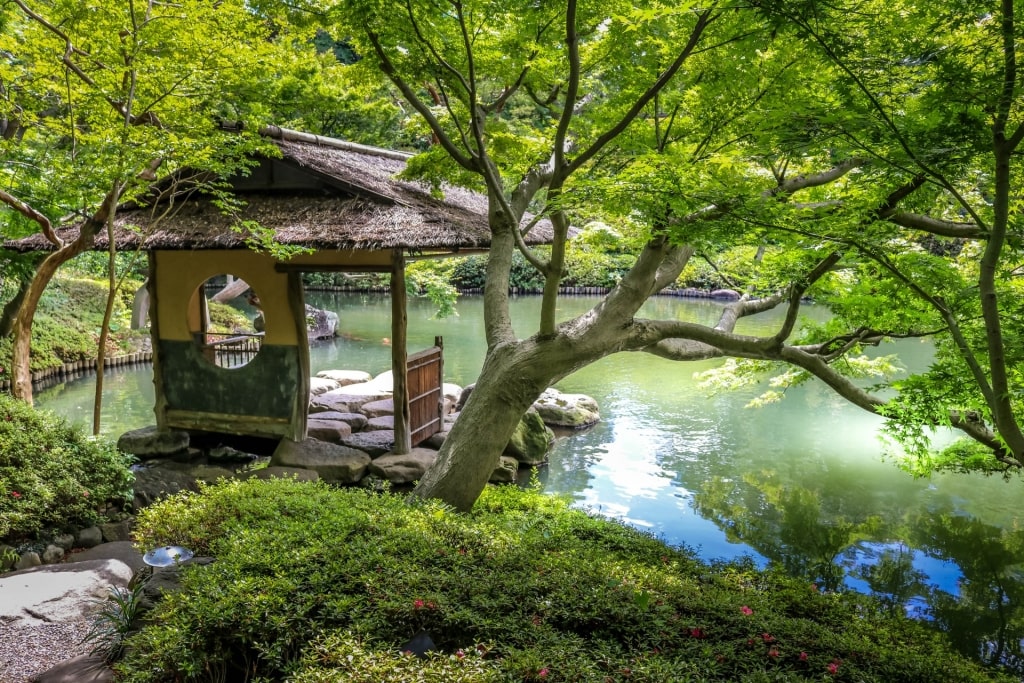
Happo-en Garden
This very large park is popular for wedding photos because of its traditional looks. Its name means “Garden of Eight Views”, a tribute to its varied, rolling landscape.
Originally built in the 1600s, the garden was remodeled in the early 1900s. At its heart are a Japanese restaurant and a popular teahouse.
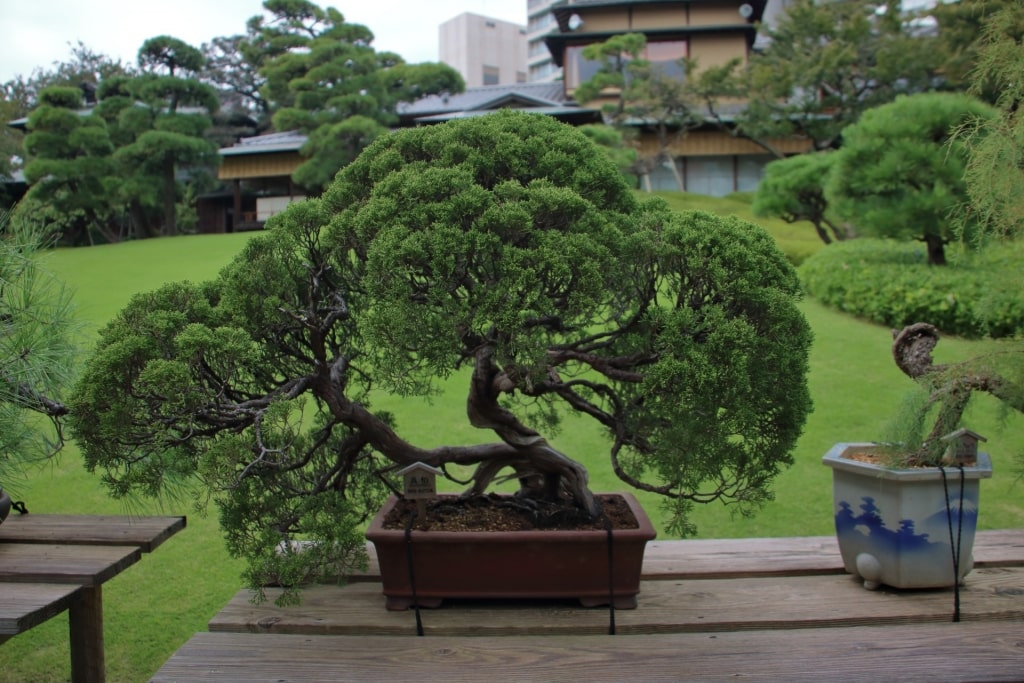
Bonsai tree in Happo-en Garden
A notable feature is a large number of bonsai trees, displayed on wooden tables for easy viewing. Most are at least a century old, with one being more than 500 years of age.
In spring, cherry blossom trees and neatly trimmed azalea bushes bring a blaze of color, while the maple trees add their reds during fall in Japan. A natural stream runs into a lovely koi pond.
This is a garden to stroll around on paths that meander through trees. It’s large enough for you to often find yourself alone as you come around a bend to discover yet another captivating view.
Meiji Jingu Gyoen
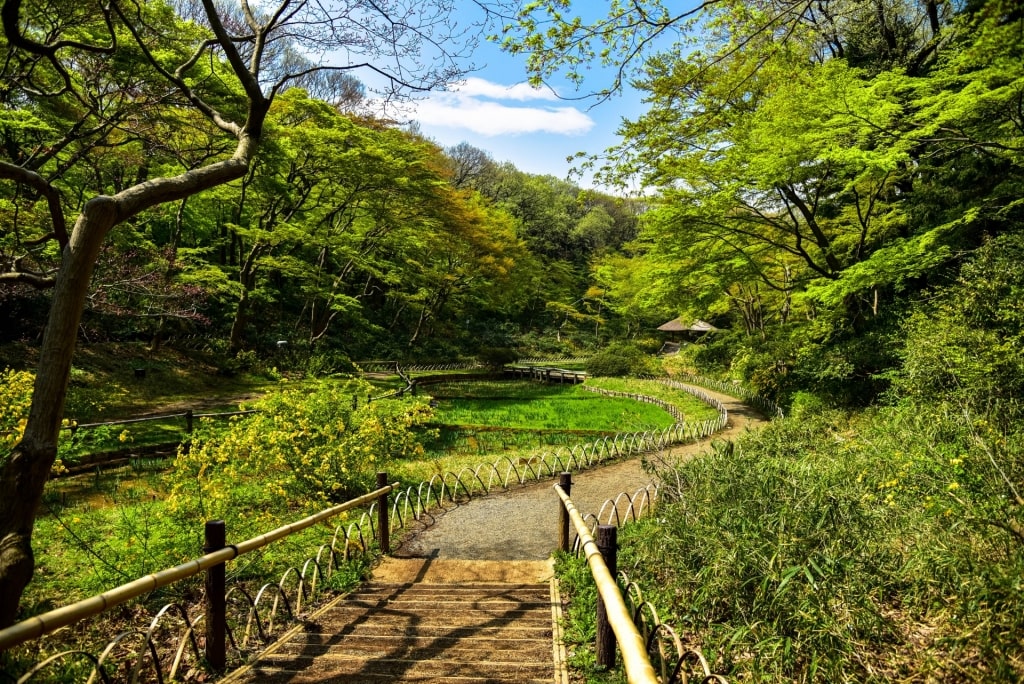
Meiji Jingu Gyoen
This “strolling” garden is attached to Meiji Shrine and is next to the popular Yoyogi Park. Both shrine and garden are surrounded by a forest of 120,000 trees, donated from all over Japan.
This setting adds greatly to the sense of peace you find in the garden. It’s hard now to believe the shrine was destroyed during a World War II bombing.
The garden’s central South Pond has the usual koi carp and turtles. Koi, bred from carp as early as 6,000 BCE, are symbols of prosperity—but each of the many different varieties has its own significance.
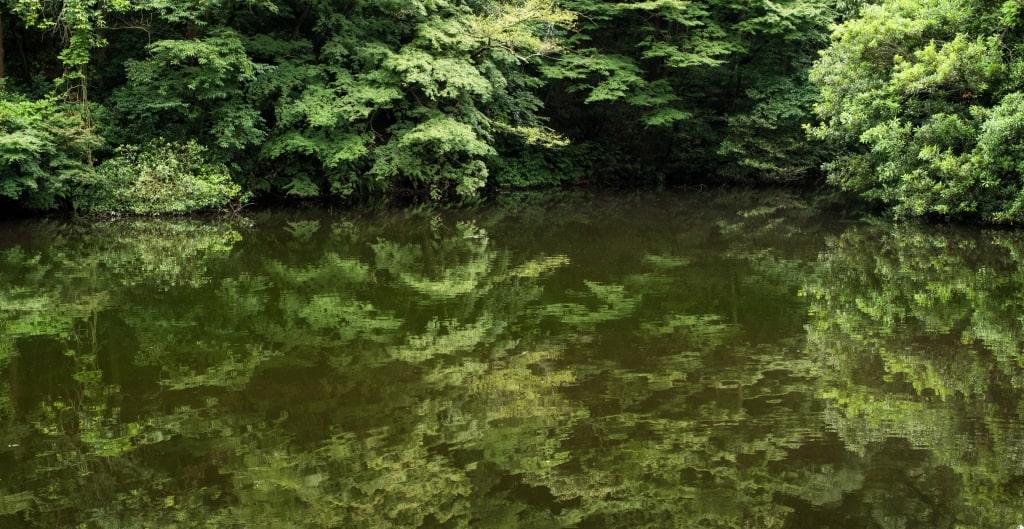
Meiji Jingu Gyoen
Kiyomasa’s Well stands on the small stream feeding the lake. This centuries-old well has gained a recent reputation as a “power spot” after certain celebrities praised its positive energy.
A traditional Japanese tea house and large iris garden are other features. But its main charm remains the wooded glades that are such a contrast to the city carrying on its business outside.
Koishikawa Korakuen Gardens
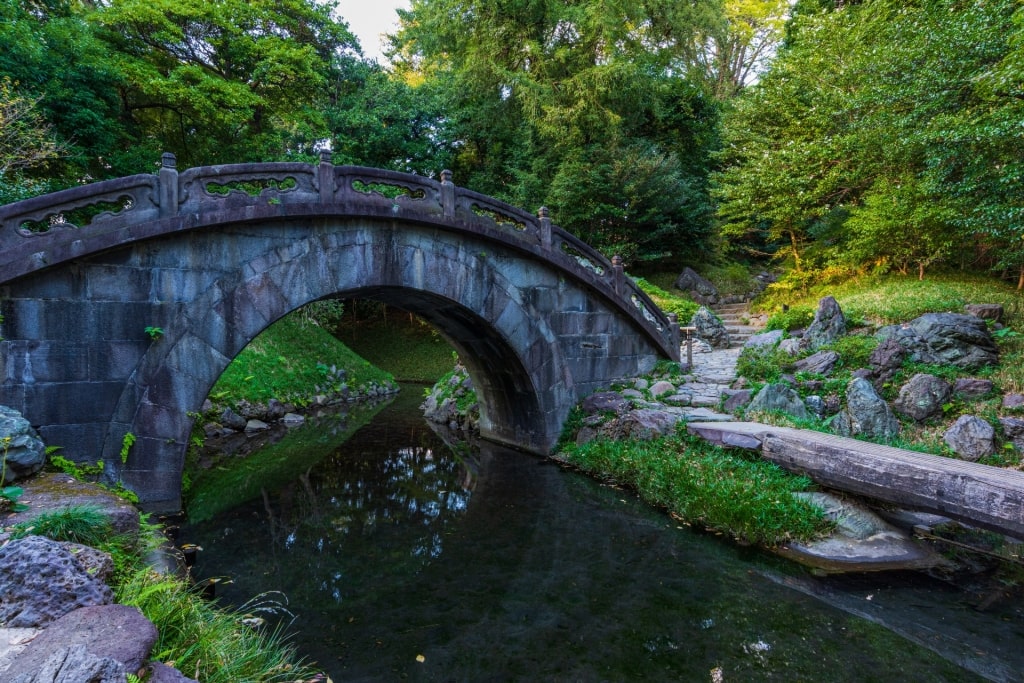
Full Moon Bridge, Koishikawa Korakuen Gardens
Recognized for both its beauty and its historical significance, this is another classic Kaiyu-style garden. Like all of them, it was heavily influenced by Chinese design and includes a notable stonework “Full Moon” Bridge.
As one of the oldest gardens in Tokyo, dating to 1629, the mature trees and ancient mosses are a central feature. In autumn, the trees make a colorful display.
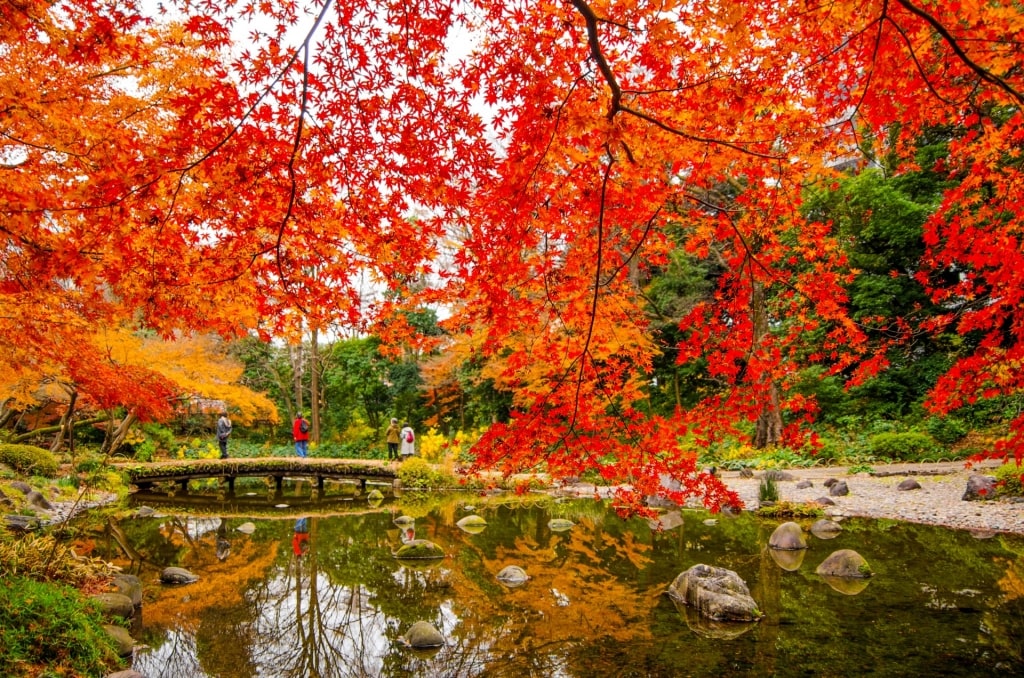
Koishikawa Korakuen Gardens
The path around the lake leads you through groves of trees, including a large one of ume. These plum trees were beloved by the founder and more than 30 different species bloom in varying colors.
Other features include a small temple, a lotus pond and a wide-spreading weeping cherry tree. A field of 600 irises is another lovely sight.
Don’t miss the Nobedan, a narrow Chinese-style stone path that meanders through picturesque woods. It links the central lake to another, smaller lake in the northeast of the garden.
Read: Famous Temples to Visit in Japan
Nezu Museum Garden
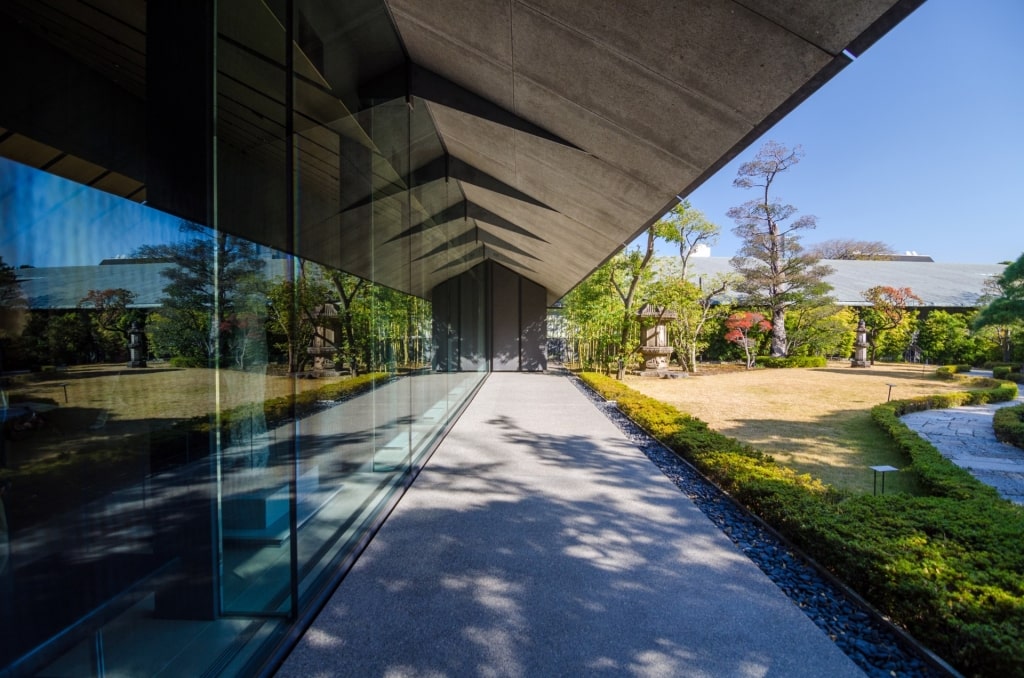
Nezu Museum Garden
The superb collection of pre-modern Japanese and East Asian art in the Nezu Museum is so fascinating that many visitors miss out on the garden. That’s a shame, as this relatively modern garden in upmarket Omotesando ranks among the best in Tokyo.
Railwayman, politician, and philanthropist Nezu Kaichirō bought the land here in 1906, adding natural features to enhance the existing hills and valleys. There’s a winding waterway connecting two ponds, and an impressive iris garden.
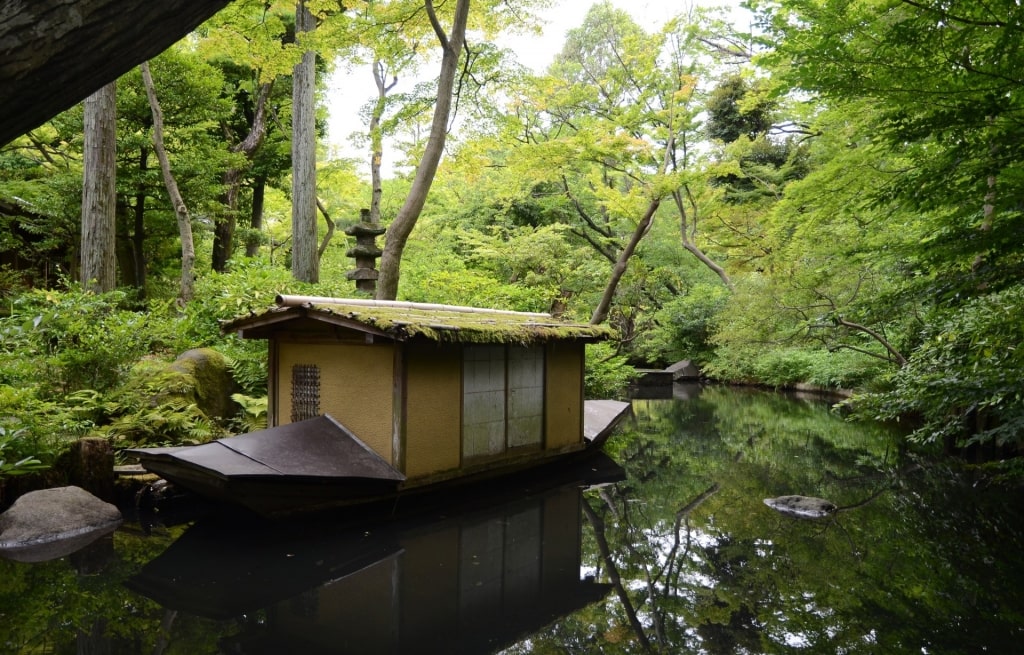
Teahouse in Nezu Museum Garden
Rustic teahouses, small shrines, and stone statues add even more variety to the many different views. The ornate stone lanterns symbolize the five Buddhist elements—from base to top—of earth, water, fire (that’s the light), air, and the spirit.
The strong traditional feel is a fascinating contrast to the strikingly modern gallery building. The Nezucafé is a good place to relax and take it all in.
Read: Best Things to Buy in Japan
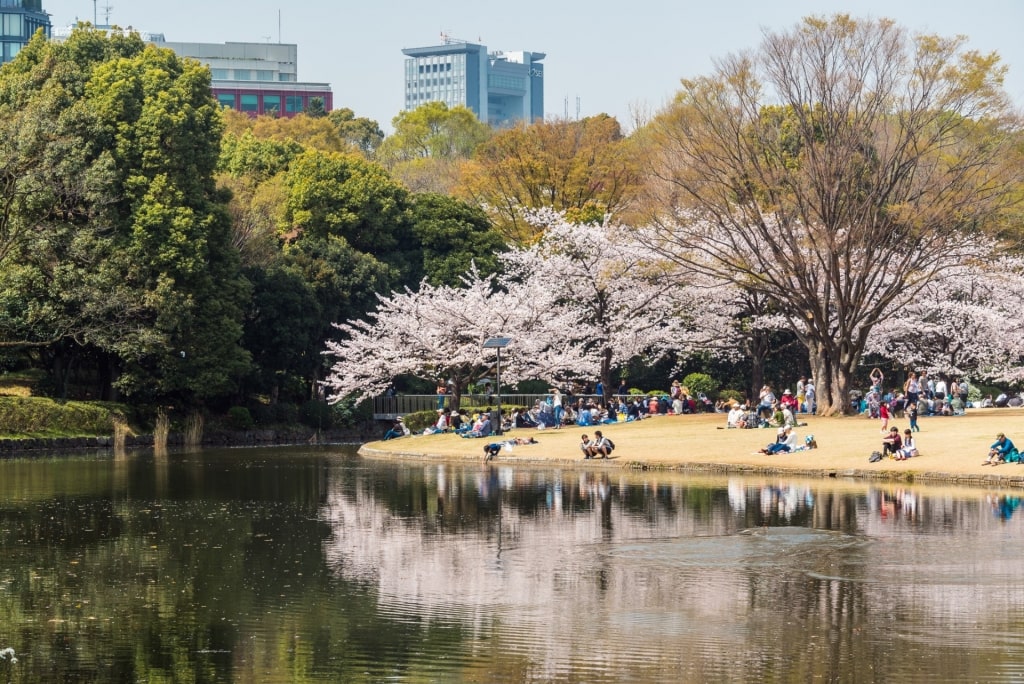
Tokyo
Do you feel inspired to relax in a beautiful Japanese garden? Browse our cruises to and from Tokyo that will make your wish come true.
